Ryan Reynolds Green Lantern
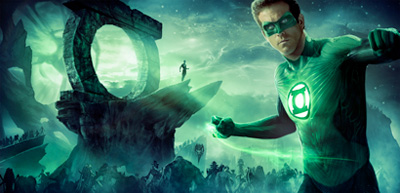
Green Lantern
Cast: Ryan Reynolds, Blake Lively, Peter Sarsgaard
Director: Martin Campbell
Genre: Action, Adventure
b>Synopsis: In a universe as vast as it is mysterious, a small but powerful force has existed for centuries. Protectors of peace and justice, they are called the Green Lantern Corps. A brotherhood of warriors sworn to keep intergalactic order, each Green Lantern wears a ring that grants him superpowers. But when a new enemy called Parallax threatens to destroy the balance of power in the Universe, their fate and the fate of Earth lie in the hands of their newest recruit, the first human ever selected: Hal Jordan (Ryan Reynolds). Hal is a gifted and cocky test pilot, but the Green Lanterns have little respect for humans, who have never harnessed the infinite powers of the ring before. But Hal is clearly the missing piece to the puzzle, and along with his determination and willpower, he has one thing no member of the Corps has ever had: humanity. With the encouragement of fellow pilot and childhood sweetheart Carol Ferris (Blake Lively), if Hal can quickly master his new powers and find the courage to overcome his fears, he may prove to be not only the key to defeating Parallax...he will become the greatest Green Lantern of all.
Release Date: 4th August, 2011
Website: www.greenlanternmovie.com.au
About The Production
"In brightest day, in blackest night, no evil shall escape my sight…"-Hal Jordan
At the edge of space, a war has been raging between those who rule with fear, and those who protect life: the Green Lantern Corps. And when one great warrior is lost, another must be chosen. This time, for the first time, one of us will become one of them.
"I was so thrilled to be bringing Green Lantern to the big screen at last," director Martin Campbell states, "because, to me, he is one of the most exciting and interesting superheroes in all of comics. First off, he's a human being, and has a lot of character flaws, so on that level, he's totally relatable. But he also gets to go to other worlds, so his adventures have infinite potential."
One of the things that has always set Green Lantern apart from most superheroes-and one of the elements that has made him so popular-is that, by the very nature of the Corps, his job takes him to the farthest reaches of space.
"Superhero movies are meant to capture our imagination in some of the most impossible ways," says Ryan Reynolds, who takes on the title role. "To that end, Green Lantern is a perfect character to bring to the movies because he really has it all-action, adventure, humor and humanity."
Producer Donald De Line affirms, "Going in, we were all very excited, knowing that today's filmmaking technology would allow us to bring Green Lantern to the screen in a way that would showcase the fun, fighting and fantastical escapades in great detail and epic scope."
Blake Lively, who stars as Carol Ferris, offers, "We've got explosions and fights and trips to outer space and back, but I love that the movie also has a great sense of fun and a hint of romance about it. And the Corps should appeal to women, too-representing virtually every species of alien imaginable, it's definitely not a men's-only club."
Audiences who are new to Green Lantern might not be aware that Hal Jordan is only one of a forceof thousands, all of whom have the title of Green Lantern.
Mark Strong, who stars as one of their leaders, Sinestro, was drawn to the film's thematic issues. "I'm intrigued by the notion of the balance between fear and will. This is a story about what you can achieve, and overcome, if you put your mind to it, and it's told in a really dynamic, electrifying way."
"I think people love to see characters who have the courage to go up against the forces of evil on a grand scale, and not succumb, but become, that hero we all wish we had inside of us," Peter Sarsgaard, who plays Hector Hammond, attests.
"I've wanted to write a superhero film for a very long time," writer and producer Greg Berlanti says.
"I grew up loving comic books. As a kid I found Green Lantern so thrilling because he's one of the few who goes off-planet. He was plucked from here and brought amongst the stars to protect the Earth, so for me and my friends, he represented real wish fulfillment. Through those stories, we got to see the entire universe."
"…Let those who worship evil's might, beware my power-Green Lantern's light!"-Hal Jordan
These words complete the Green Lantern oath-the vow taken by each of the Lanterns in the cosmos who have sworn to serve and protect-words that aficionados of the character have known by heart for years, and that moviegoers will hear for the very first time this summer when they are spoken by new inductee, Hal Jordan.
"The oath is extremely important," Martin Campbell says. "It has always been part of Green Lantern lore and when we first hear it in the film, it's a pivotal moment. Hal Jordan's just been given the ring and the lantern, and he doesn't know what either of them means, until they come together and draw the oath out of him, and his voyage of discovery begins."
For the uninitiated, the oath, along with the lantern and ring, are the outward tools that provide aGreen Lantern his powers; with them and with his own strength of will, he can create or do anything his mind can envision.
The character goes back over 70 years, first appearing in All-American Comics in 1940, and evolving over time. The Green Lantern Corps is a federation assigned to police the 3,600 sectors in the universe, overseen by an ancient race of immortals called the Guardians, who reside on the planet Oa.
Most Lanterns are aliens, but of the six Earthbound members in DC Comics' history (Alan Scott, HalJordan, Guy Gardner, John Stewart, Kyle Raynor and Jade), Hal is arguably the most popular.In 1959, writer John Broome and artist Gil Kane created Hal Jordan under the guidance of editorJulius Schwartz, reintroducing the character of Green Lantern to the world in Showcase #22, and earning their own title, Green Lantern, the following year. Unlike his more mystically bent predecessor, this new Green Lantern was a little more "sci-fi" as a member of an intergalactic police force comprised of numerous alien species, each with a ring that gave them extraordinary mental and physical abilities. Broome and Kane also created several of the main characters in Hal's life who appear in the film, including Carol Ferris and Tom Kalmaku, and some of Hal's family members.
After many years away from the Corps, Hal Jordan was brought back in 2005 by writer Geoff Johns and artist Ethan van Sciver, in the miniseries Green Lantern: Rebirth and in the subsequent ongoing title. Their work reignited an interest in the comic that had been missing for some time, and garnered them both critical and commerical success.
Geoff Johns, a self-described hardcore comic book fan since his youth and a co-producer on the film, felt the re-launch was an opportunity he couldn't pass up. "Prior to Green Lantern: Rebirth, Hal Jordan was actually dead and buried and the Green Lantern Corps was no more. There was only one ring left," he says. "When I took on the book, I really wanted to bring back the epic tales of Green Lantern and the Corps, and their role in the greater DC universe at large."
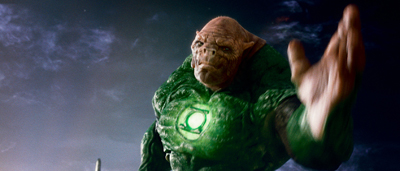 As the readership grew, Geoff Johns decided to go back and tell Hal Jordan's story "from an emotional point of view, and in a modern-day context." The result was 2008's publication Green Lantern: Secret Origin. "I created a storyline for new readers that related what made Hal who he is and how he became a member of the Corps."
As the readership grew, Geoff Johns decided to go back and tell Hal Jordan's story "from an emotional point of view, and in a modern-day context." The result was 2008's publication Green Lantern: Secret Origin. "I created a storyline for new readers that related what made Hal who he is and how he became a member of the Corps." At the same time that Geoff Johns was penning Origin, the filmmakers were developing the motion picture, with Geoff Johns' previous writings providing a good deal of inspiration.
"Our film is the Hal Jordan origin story," Donald De Line says. "In telling it, we wanted to be faithful and true to the spirit and the canon of Green Lantern, and Geoff John's body of work provided an ideal place to start."
Just starting at the beginning, however, was not the only task at hand for writers Greg Berlanti, Marc Guggenheim and Michael Green. "Unlike Superman or Batman, who most people are familiar with, Green Lantern isn't part of the everyday vernacular…yet," Michael Green smiles. "We wanted to hold the audience's hand and guide them as they got to meet this great character and see a place like Oa for the first time."
Marc Guggenheim was equally motivated. "I'm a huge comics fan going all the way back to before I could even read, and Green Lantern was one of the books I grew up with. He's the first superhero I can remember, and he always remained a cool and provocative character for me. I couldn't wait to bring his story to the screen."
"What I find so unique about Green Lantern is that his abilities ultimately depend on the power of his imagination," screenwriter Michael Goldenberg says. "Maybe it's because I'm a writer, but there's just something incredibly attractive about that."
Something else the writers found enticing about the project was the copious amount of research it required. "The most fun homework you could ever have-sitting around reading comics all day," Michael Green enthuses.
Crafting the screenplay, the writers had to delve into decades' worth of adventures. Says Marc Guggenheim, "We had to be like archaeologists of the mythos and draw out what we thought was the best tale to tell."
"What was most important to everyone was to show on the page the genuine respect we feel for the source material," echoes Michael Goldenberg. Greg Berlanti, too, felt the responsibility of bringing this particular character, with his specific abilities, to life.
"When you have a character with the power to make real anything he can conceive of, to literally whip up anything that comes to mind, you have to make it thrilling," he acknowledges, "and more and more so as the story goes on. I believe that, between what we came up with and what Martin Campbell and the actors and the effects teams have done with it, it should make for a pretty fun ride for audiences."
"I don't need to tell you your duty.
I don't need to tell you who we are." -Sinestro
" WE ARE THE CORPS!!!" -The Green Lantern Corps
Just as Hal Jordan is chosen as the first human to wear the ring, Ryan Reynolds, as the first actor to bring Green Lantern to the big screen, knew he'd have an entire legion of fans looking to him to live up to the oath. He didn't let the parallels get to him as he relished playing the dual role of irreverent, highflying Hal Jordan and his superhero-in-training counterpart.
"What I love about Hal is that there's nothing extra-ordinary about the guy," Ryan Reynolds says of the Corps' unwitting draftee. "Of course, he's not necessarily your average human being, in terms of what he does for a living, but for the most part, he's not an exceptional example of his species. He's just a guy, and a fairly irresponsible one at that, though there are, of course, reasons for his reckless behavior."
Those reasons stem back to his youth, but have remained unresolved-purposely ignored, really-until a little self-examination is forced upon him when out of nowhere he's chosen for this higher calling.
Throughout the course of the film Hal will have to look a little deeper into himself, but when this gift is initially bestowed upon him, all he can really think besides, "Wow, how cool is this?" is, "Why me?"
Though Hal may wonder why the ring chose him, "Why him?" was never a question the filmmakers asked themselves in casting Ryan Reynolds for the part.
"Ryan Reynolds is a superb actor," Martin Campbell says. "He also physically looks the part, is charming, funny, and has a great sense of decency. I knew he could easily pull off both the undisciplined, shoot-from-the-hip maverick that is the Hal we first meet, and the fearless and focused fighter he'll have to become if he's to save the day. Ryan Reynolds did it all; his performance really sets the tone for the movie."
You really feel what Hal is going through, and how it's affecting him, at every moment."
Perhaps Hal's most transforming moment comes when he recites the Green Lantern oath for the first time. Ryan Reynolds remarks, "He's not really even cognisant of what he's saying, it just sort of comes out of his mouth, almost unbeknownst to him."
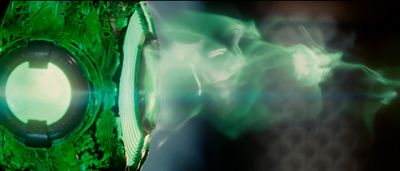 Both Martin Campbell and Ryan Reynolds were very careful about how those integral lines would be portrayed.
Both Martin Campbell and Ryan Reynolds were very careful about how those integral lines would be portrayed."Actually saying the oath for the first time was a little nerve-wracking," the actor reveals, "because it's something that a lot of people know inside-and-out, so I tried to handle it with kid gloves. The next time Hal says it, he understands the weight behind the words and that they're part of his arsenal, so it needed a completely different approach."
"I felt that the way to do those scenes was not to go all 'Shakespeare' or 'Star-Spangled Banner,'" Martin Campbell adds, "but to honestly give it the import that the character's mythology required. Each time, we treated it as just part of the scene, and I think it worked beautifully."
Hal's new identity as Green Lantern comes as a surprise to him, it's a complete shock to his lifelong friend and sometime lover, Carol Ferris. A fellow test pilot, Carol Ferris has always been by-the-book, enabling her to move up in the ranks at her father's company, Ferris Aircraft, making her now…Hal's boss. "Hal and Carol have a bond that goes back to when they were kids," Ryan Reynolds relates. "There's a great deal of history there, both good and bad. There are moments when they're like magnets flipped the wrong way, pushing off one another, but you can always tell there's something pulling them together, too."
Blake Lively, who plays the part of the go-getter pilot-turned-businesswoman, offers, "Carol andHal have an interesting dynamic, and Ryan Reynolds and I had that same sort of playful banter."
"Blake Lively and Ryan Reynolds had great chemistry right off the bat," Donald De Line confirms. "They really hit it off and I think that translated nicely onto the screen, whether the characters are in the heat of passion or the heat of battle."
Blake Lively adds, "Regardless of what they might have felt, or feel, for each other, Hal and Carol have always butted heads. She's no damsel in distress. Like Hal, she's a test pilot, and now that she's about to inherit her father's company, she's in a position to really question him. And even after this unbelievable thing happens to him, she challenges him as much as he challenges her. If he can't believe in himself, she'll believe in him enough for the both of them. She's not about to let him walk away from this amazing opportunity."
"Carol is the alpha female in the film, and she really helps to enrich the story's emotional spine,"Martin Campbell asserts. "She's strong and capable and responsible-everything Hal is not when we first meet him. And Blake Lively truly combined all those qualities in a completely natural way. She was just great."
The third-wheel in Hal and Carol's longstanding on-again, off-again relationship is HectorHammond. Hector Hammond grew up with them and was a friend, but was always on the outside looking in, having both a desire for Carol and a desire to be Hal. Brilliant but forever failing to meet the unrealistic expectations of his father, he has become a professor at a community college, whose specialty is even more obscure than he is: xenobiology.
Peter Sarsgaard, who plays Hector, found the different facets of his character to be intriguing. "I was very interested in the world," he recalls, "and in terms of the character, it was like, 'choose your adventure.' I immediately felt that there were at least 50 different ways that I could play this guy, and to me, that's really motivating. He lives alone, has a terrible relationship with his father and no other real connections to speak of, but he seems strangely content in his misery, until everything…changes."
A devotee of the idea of life on other planets, Hector is presented with the chance of a lifetime when government officials show up at his door and ferry him off to a secret bunker to examine a body-an alien corpse, to be exact, and the first to ever be found on Earth. But Hector's shining moment proves to be far more dangerous than he could ever imagine when, despite every precaution, he's exposed to the greatest evil the universe has ever known: Parallax.
After coming into contact with Parallax, Hector begins to develop powers of his own. Just as Hal's will is empowered by the color green, Hector's eyes glow yellow as he draws strength from the fear of others. Always viewing Hal as a rival and Carol as unattainable, Hector's newfound confidence begins to bring the worst out in him.
"All hell breaks loose," Peter Sarsgaard continues, "but for Hector, it's the greatest thing that's ever happened to him." And, he adds, a uniquely enjoyable experience for him, as well. "This was pretty wild for me-stuff I've never done before. It was such a catharsis for Hector, finally being able to do whatever he wants, and it was really liberating for me, too."
"Even though he's ultimately a villain, Hector is really sort of tragic, and the way Peter played him, he manages to evoke your sympathy," Martin Campbell says. "He's an actor who savors playing the kind of role where he can completely transform into a complex, intriguing and even dark character, and Hector offered him that opportunity."
Hal has a different kind of adversary in Thaal Sinestro, the leader of the Green Lantern Corps, who mourns the loss of fallen Lantern Abin Sur as strongly as he questions the choice of Hal to take his place; although, according to everything he knows, the ring never makes a mistake.
Sinestro is one of only two humanoid aliens portrayed by an actor, albeit under heavy prosthetic makeup. Cast in the role is Mark Strong, who says, "He's a very hard task master, but it's all done for the right reasons; he's totally committed to the cause," Strong justifies. "He genuinely believes in the Corps and that they can keep peace in the universe."
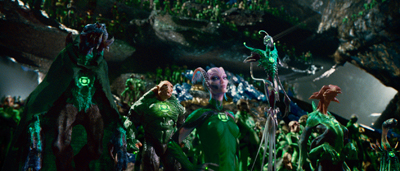 Part of Sinestro's skepticism with regard to Hal's capabilities stems from his feelings about the human race, which he deems too young, arrogant and unexceptional to be part of the Corps. "He doesn't think humans are worthy, so he is extremely dismissive of Hal, thinking him bound to be the weak link. Of course, a lot of those feelings exist because he doesn't think Hal can ever live up to the memory of his former colleague, mentor and friend."
Part of Sinestro's skepticism with regard to Hal's capabilities stems from his feelings about the human race, which he deems too young, arrogant and unexceptional to be part of the Corps. "He doesn't think humans are worthy, so he is extremely dismissive of Hal, thinking him bound to be the weak link. Of course, a lot of those feelings exist because he doesn't think Hal can ever live up to the memory of his former colleague, mentor and friend.""Mark Strong brought so much gravitas to the role of Sinestro," Donald De Line says. "Every time the camera rolled, he had great presence and commanded total attention and respect, which is precisely what was called for."
Assisting Sinestro in introducing Hal to the Corps are Tomar-Re, who greets Hal upon his arrival on Oa, and Kilowog, Hal's combat training officer. Both characters were computer-generated, based on motion capture performances by stuntmen Dorian Kingi and Spencer Wilding, with Geoffrey Rush and Michael Clarke Duncan lending their distinctive voices to the respective roles.
"Geoffrey Rush's voice was perfect for Tomar-Re," Campbell declares of the actor's ability to bring alive the Xudarian, who appears to be a cross between a bird and a fish. "He brought a sense of warmth to the rather cerebral character, who is the first to encounter Hal on Oa and who helps him get his bearings."
An alien encounter of a very different kind comes when Hal is introduced to Kilowog, a towering, ogre-like Lantern who instantly begins putting Hal through his paces.
"Kilowog is a fan favorite, and Michael's sonorous intonation, with just a hint of humor, felt like a natural pairing," Martin Campbell says. "You can hear just the slightest bit of delight in his voice when he's yelling at Hal and throwing him against the wall."
Induction into the Corps can only come when the ring of a fallen Lantern chooses its replacement.Abin Sur, an esteemed leader, is attacked by Parallax and, as he is dying, sends his light out to find the next Green Lantern, who turns out to be Hal. The brief but key role of Abin Sur was played by New Zealander Temuera Morrison.
One of the only people Hal entrusts with the knowledge of his newfound powers is his flight navigator and closest confidant, Tom Kalmaku, played by another New Zealand native, Taika Waititi. Hal calls Tom after Abin Sur bequeaths the lantern and ring to him, and the two are barely out of sight before a government helicopter arrives to investigate the alien wreckage. The body of Abin Sur becomes the responsibility of Dr. Amanda Waller, played by the venerable Angela Bassett.
"Amanda Waller is a brilliant scientist who holds a pretty high government position," Angela Bassett says.
"She shares Hector Hammond's interest in alien life forms but understands that, despite her elevated status, she's required to bring in someone who's more of a specialist in that area."
Hector Hammond is honored, if a bit confused, by Waller's request for a humble biology teacher's input on the autopsy, feeling, perhaps for the first time, some respect for his expertise-something he's never received from his father, Senator Robert Hammond.
Tim Robbins plays the pompous politician. "Growing up, my favorite comic book was The Flash," he admits, "but I did love Green Lantern, and I've gotten more and more into him over the years. He's a really exceptional superhero. The imagination soars when you consider what he can do-if he wants a chainsaw, he can have a chainsaw; if he wants to fly, he can fly, and not only in this atmosphere, but in outer space as well."
Portraying somewhat better examples of paternal correctness are Jon Tenney as Hal's idolised dad, Martin Jordan, and Jay O. Sanders as Carol's father, Carl Ferris, who is preparing to hand over the reigns of Ferris Aircraft to his daughter.
"We really had a world-class cast all the way down the line and including, of course, our wonderful voice talent," Greg Berlanti says. "We were so fortunate to have such an exciting combination of actors to play these roles."
Donald De Line concurs, "Our cast was truly ideal for this film, and the performances that Martin Campbell got from them were beyond my greatest expectations. I look forward to seeing the audiences' reactions when the characters they've loved for so long finally come to life on screen."
Blake Lively says, "When I first sat down with Martin Campbell to talk about the story and my character, his enthusiasm made me really excited to be a part of this movie. Now, after being on set, I don't think I've ever seen anyone work as hard as he does. That level of commitment makes everyone around him that much better."
"Martin Campbell has such a distinct vision for big, adventurous filmmaking like this, you can't help but be swept away with the possibilities," Ryan Reynolds states. "I knew he was gonna light this thing on fire, and that's one of the main reasons I wanted to be there."
"Anything I see in my mind, I can create." -Hal Jordan
As with every superhero movie, the "Green Lantern" filmmakers knew that the fans' greatest concern was likely to be the visual representation of the world they know and love from the comics. Martin Campbell and his creative team, led by production designer Grant Major, set out to make every location from Coast City to Oa, and each character from Abin Sur to Sinestro, just right. To that end, they took pains to faithfully recreate every detail and to enhance the imagery for the big-screen experience.
Co-producer and Green Lantern specialist Geoff Johns declares, "The first time I saw the production art, what they planned to do with the Corps and Oa and the Guardians, I was blown away. It was exactly what anyone who loves Green Lantern would dream of; my dreams for the film were realised when I saw it."
One of the oldest planets in the galaxies, the fictional Oa serves as headquarters for a race of omniscient humanoids who have dubbed themselves the Guardians of the Universe, a supreme court of sorts, who supervise the Green Lantern Corps. Oa also holds the Central Battery, the source of all energy, including the energy for the Green Lantern rings.
"Think of the universe as a sphere divided into 3,600 sectors," Geoff Johns explains. "Each sector is a kind of pie wedge, all pointing to Oa."
"Even though Oa is completely digital," Martin Campbell says, "the design had to be organic and believable. And because it is alien, it couldn't be Earth-like in any way; the only thing from Earth would be Hal, when he arrives there. Everything else had to be fantastical, while at the same time plausible."
Grant Major felt one of his tasks was "to make audiences believe that they were on Oa, going through this discovery with Hal. It had to have gravity and weight. We didn't want it to feel like being in a dream, but rather like an alternate reality."
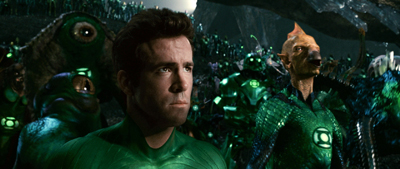 The production designer relied on the film's researcher and resident comic book expert, Ozzy Inguanzo, who compiled everything the filmmakers would need to know to design the film.
The production designer relied on the film's researcher and resident comic book expert, Ozzy Inguanzo, who compiled everything the filmmakers would need to know to design the film."I immersed myself in over 50 years of Green Lantern comics," Ozzy Inguanzo says, "I worked hard to respect the integrity of the source material and to get even the smallest details into the film, for the diehard fans, and I now include myself among them."
"It was critical to have someone on our team who was aware of everything Green Lantern, and Ozzy was terrific from the word 'go,'" Grant Major says.
Once the overall look of Oa was established, two areas of the planet's vast terrain had to be created: the Citadel, where the Guardians reign; and the Great Hall, where Hal and the audience would get to see the gathering of the entire Lantern federation-and where avid readers of the comics will recognise many of their favorite members of the Corps.
Those integral set pieces would ultimately be accomplished through CGI; however,Grant Major's design team did construct large-scale models of each set to serve as reference points for Campbell's staging of the scenes. The visual effects team then turned the sets into a virtual reality, where the action unfolded.
In addition to the otherworldly places, the effects team was also charged with bringing to life thousands of otherworldly characters, including Tomar-Re, Kilowog and the rest of the Green Lantern Corps. One of the most prominent characters was the Corps' most formidable adversary, Parallax, who was entirely computer-generated.
"It was critical to convey the scope of Parallax's power and malevolence, because his entire existence depends on inducing fear," says John "DJ" DesJardin, who served as a supervisor for the film's numerous visual effects.
Back on Earth, the film would require a number of practical sets as well, which were achieved entirely in and around New Orleans. Grant Major's teams designed and built both Hal's and Hector's apartments, the latter of which Major describes as "the type of space that he probably had as an undergraduate student, but never really left, so there are layers upon layers of his quiet, introverted life all around him."
They also built Ferris Aviation's office suite, which was influenced by the art deco terminal at the area's Lakefront Airport; a party sequence dance floor and stage, for which the production actually utilised the airport exterior itself; and the steely underground bunker laboratory where Hector autopsies the body of Abin Sur, inspired by a visit to NASA and a massive building which houses fuel tanks for the space shuttles.
On a much smaller, but no less significant, scale, Grant Major's art department was also responsible for the design of two iconic props for the story: Hal Jordan's ring and lantern. Although they'd been careful to adhere closely to the comics for most of the film's design work, Grant Major wanted the lantern to take its cue from the script. "I wanted it to be a bit mysterious, and to look like it originated from Oa," the designer shares. He and key concept illustrator Fabian Lacey, to whom Major credits the final look, drew inspiration for a portion of the lantern from the Fresnel lens, devised in 1823 by the French physicist and engineer of the same name.
"The whole sense of willpower being part of the emotional spectrum, and green representing that particular emotion on the color spectrum, became a component of the lantern, which reflects something of a prismatic lens motif," Grant Major illustrates.
Property master Andrew Petrotta took the final design and created eight copies out of resin, four battery-powered and four electric, each approximately 13 inches high and weighing about eight pounds. He then antiquated them by applying scarring and dark coloring, making them look as though they'd been through battles for eons.
Several ideas were worked through for the Green Lantern power ring, which also incorporated the prism motif. Each one was tried on Ryan Reynolds' hand, to ensure that the size and shape and fit were just so. The actor's opinion was important as they wanted him, like Hal, to feel powerful wearing it, as though he could wield the ring as a weapon.
After a period of trial and error, costume designer Ngila Dickson hit on what became the final look, a perfect balance of power and masculinity. The ring was made from brass, with nickel plating, while the green stone, which carries the Green Lantern symbol, was made from dyed resin, with the intent that it, like the lantern, appear to be a relic from Oa.
Martin Campbell states that "because the ring is one of the most powerful weapons in our 'world,' and such an important part of who Green Lantern is, it was definitely worth the extra effort to get it right."
"Nice jacket. Last time I checked, you didn't even own one."-Carol Ferris
"Yeah, I've been shakin' up the wardrobe lately…" -Hal Jordan
In addition to her contribution to the ring design, it was, ironically, Ngila Dickson who suggested that the movie's most vital costume-the Green Lantern suit-be fashioned in the computer instead of on a sewing machine. Therefore, the suit would be created by the visual effects team in post production.
Though she wouldn't physically manufacture the ensemble, Ngila Dickson did provide the blueprint-with a little help. She explains, "The first thing I did was run to the local comic book store to do the research."
Knowing she would need to maintain the basics of the uniform-the symbol, the green and black colors-she nevertheless had some ideas about doing things differently. "I wanted to reinvent that wheel a little. So I thought of the suit being organic in nature."
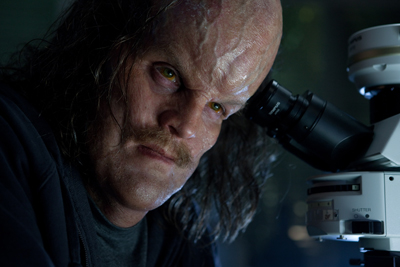 Ngila Dickson was inspired by old anatomy drawings she had found by 16th-century illustrator and anatomist Vesalius. "That was a gift," she says, "and from there I found my way forward."
Ngila Dickson was inspired by old anatomy drawings she had found by 16th-century illustrator and anatomist Vesalius. "That was a gift," she says, "and from there I found my way forward." "Ngila Dickson came up with the idea of going back to the physiology of the body," Martin Campbell offers. "It's in the character's DNA; it's essentially a second skin that follows his own musculature, not something he slips on from the outside."
Having never executed her craft in the computer world before, Ngila Dickson took the leap, initially creating a 3D digital model from which to work. "From that, I completely understood the costume and was confident that we could make it happen," she says.
"I am so glad that Ngila Dickson didn't choose to go the traditional route, because her ideas were exactly what this character and this film needed," Greg Berlanti affirms. "And they came at just the right moment-as technology finally caught up with design-and we could render this kind of costume successfully."
Thus Ryan Reynolds, Mark Strong and Temuera Morrison would have to spend much of their days during production in motion capture suits or, as Ryan Reynolds affectionately put it, "a gun metal gray outfit that made me look like a crash test dummy. 'Skin-tight bodysuit' and 'kicking ass' are words that don't normally go together, but once you see how it finally looks with all the muscle fibers, almost like a human body without the skin on, I had to admit it was pretty ingenious."
"There was a lot of teasing about the lovely onesies with dots and crosses all over them," Ngila Dickson recalls, "but they were good sports."
Ryan Reynolds also wore a number of markers on his face to track his facial expressions and dimensions for the mask that would be digitally applied later on. From the costumes to the energy constructs created by the Corps, the primary color of the entire production was, naturally, green, presenting a challenge to director of photography Dion Beebe and his team. Dion Beebe relates, "Green is a tough color, and not one that sits well on the human face. Therefore, in our tests, we concluded that the green energy in the story needed to be more of an aura…something in the atmosphere that instead plays across the face."
Mark Strong and Temuera Morrison had a great deal more than a bodysuit and dots to contend with: several hours in the makeup chair each day, as they were transformed into the aliens Sinestro and Abin Sur.
Despite the time it took to get him into character, Mark Strong says, "Part of what I loved about playing Sinestro was his incredibly strong look. And whether it's accents, wigs, costumes, whatever, I love the opportunity to disappear into a part."
Prosthetic makeup department head Joel Harlow and his team began the process by working on maquettes, which allowed them to test various textures and skin colors. "We ended up using a tattoo color called French Quarter Fuchsia, which I thought was appropriate considering we shot the movie in New Orleans."
"The work Joel Harlow and his group did was crucial to the depiction of these characters, who looked almost like they stepped right out of the comic books. Every single detail was realised to the nth degree,"Martin Campbell says.
Peter Sarsgaard's character, Hector Hammond, makes his own physical transformation on-screen over the course of the film, including an ever-more grotesquely misshapen cranium that pulses as evil overtakes him. Three different prosthetic makeups were applied to the actor, representing the different stages of his "infection" by Parallax.
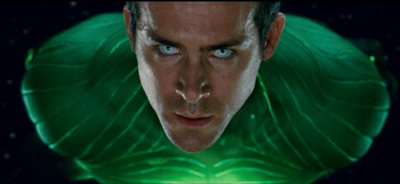 Despite the extreme heat and humidity of the New Orleans summer, Peter Sarsgaard was often required to wear the prosthetics, weighing at times up to 12 pounds, for up to 13 hours at a time. The production made sure to help alleviate his discomfort by bringing in a body worker to apply cold compresses to his arms and legs to keep his body temperature down. Also, the on-set medic utilised a machine, frequently employed by NASA and the NFL, designed to cool the body's core temperature via the hands. "Obviously, I couldn't stick my head in a bucket of water," Peter Sarsgaard quips, "so this was much more efficient and it helped tremendously."
Despite the extreme heat and humidity of the New Orleans summer, Peter Sarsgaard was often required to wear the prosthetics, weighing at times up to 12 pounds, for up to 13 hours at a time. The production made sure to help alleviate his discomfort by bringing in a body worker to apply cold compresses to his arms and legs to keep his body temperature down. Also, the on-set medic utilised a machine, frequently employed by NASA and the NFL, designed to cool the body's core temperature via the hands. "Obviously, I couldn't stick my head in a bucket of water," Peter Sarsgaard quips, "so this was much more efficient and it helped tremendously.""Fly. Alright. I can do that." -Hal Jordan
As a test pilot, flying is a big part of Hal Jordan's life. As Green Lantern, it's even bigger-and better.
"I know that going up in a fighter jet sounds pretty phenomenal, but I have a deep fear of flying,"Ryan Reynolds confesses. "So in that respect, I was sort of shadowing Hal's story by having really no choice but to overcome my fear."
Ryan Reynolds found himself off the ground quite a lot during production…in more ways than one. "Believe it or not, I was actually excited to do the high wire work," he says. "I've done it before and I love that stuff."
The first time Hal is transported to Oa, he is essentially shot through space. So was Ryan Reynolds- and without a rehearsal. Martin Campbell set up the shot using a stuntman, then filmed Ryan Reynolds' first attempt in order to capture his-and Hal's-naturally terrified reaction.
"We filmed the sequence in downtown New Orleans, using cables and a 95-foot crane," Ryan Reynolds remembers. "They fired me up into the air with the cameraman attached just above me. I think the rate of speed was around 60 feet-per-second, so it was a real quick ride, maybe three seconds, tops. It was probably the scariest experience of my life, but it was also pretty amazing."
"A lot of flight in superhero movies has traditionally been done on a soundstage, against a greenscreen, but we really wanted to try to make it more realistic, to do as much as possible in a real environment," stunt coordinator Gary Powell says. "It helped that Ryan Reynolds was very willing to do anything we could allow him to do."
To prepare the actor for all the wire work, Gary Powell suggested that his trainer focus on activities liketrampolining, which develop core strength. "You see a lot of guys that can lift huge amounts of weight, but you put them on wires for like five minutes and all of the sudden they're done," he grins. "It's all about the core."
Martin Campbell and Gary Powell discussed the style of flight that Hal, as Green Lantern, would naturally assume. "He's a fantastic test pilot, so we asked ourselves, 'If someone like that suddenly had the ability to fly unaided, how would he do it?'" Gary Powell says. "We thought that he'd probably fly like he flies his plane-super fast, with a lot of barrel rolling and so on. So that
MORE
- Emma Stone Magic in the Moonlight
- Jessica De Gouw Cut Snake
- Maxine Peake Funny Cow
- Denzel The Equalizer 2
- Johnny Flynn Beast
- Logan Marshall Green Upgrade
- Shailene Woodley Adrift
- Eric Toledano and Olivier Nakache C'est La Vie...
- André Leon Talley The Gospel According To André...
- Shakespeare In Tokyo
- Mission: Impossible Fallout
- Glenn Close The Wife
- Allison Chhorn Stanley's Mouth Interview
- Benicio Del Toro Sicario: Day of the Soldado
- Dame Judi Dench Tea With The Dames
- Sandra Bullock Ocean's 8
- Chris Pratt Jurassic World: Fallen Kingdom
- Claudia Sangiorgi Dalimore and Michelle Grace...
- Rachel McAdams Disobedience Interview
- Sebastián Lelio and Alessandro Nivola...
- Perri Cummings Trench Interview



